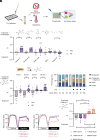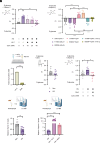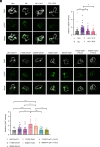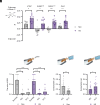Stress-induced preference for antioxidants by Drosophila
- PMID: 40966287
- PMCID: PMC12478143
- DOI: 10.1073/pnas.2512852122
Stress-induced preference for antioxidants by Drosophila
Abstract
In an ever-changing environment, animals make optimal decisions to ensure their well-being. Faced with limited food sources, they often seek foods that provide the nutrients they require to maintain homeostasis. Under extreme circumstances (e.g., infection), they may exhibit ingestive behaviors, such as seeking out substances (e.g., toxins) that suggest self-medication. Few studies, however, have investigated the mechanisms that ensue self-medication. Here, we report the selective intake of antioxidants by Drosophila melanogaster during a period of heat stress or sleep deprivation. This preference was alleviated by prefeeding them vitamin C or dehydroascorbic acid (DHA) before exposure to stress. Heat stress led to an increase in reactive oxygen species (ROS) levels in the gut, which was alleviated by the intake of vitamin C. Heat stress reduced vitamin C in hemolymph, whereas the consumption of vitamin C or DHA increased it. Furthermore, the intake of vitamin C ameliorated the intestinal barrier dysfunction and extended the survival of flies that had been exposed to chronic heat stress. The heat-induced preference for vitamin C appears to develop independently of the known peripheral chemosensory receptors for this micronutrient. We propose that fruit flies possess an interoceptive mechanism that mediates the detection of vitamin C to overcome environmental challenges.
Keywords: Drosophila; reactive oxygen species (ROS); self-medication; stress-induced attraction to antioxidant; vitamin C.
Conflict of interest statement
Competing interests statement:The authors declare no competing interest.
Figures





References
MeSH terms
Substances
Grants and funding
- NRF-2022M3A9F3082982/National Research Foundation of Korea (NRF)
- RS-2023-00255126/National Research Foundation of Korea (NRF)
- NRF-2021R1C1C2009170/National Research Foundation of Korea (NRF)
- RS-2023-00212599/National Research Foundation of Korea (NRF)
- RS-2023-00217798/National Research Foundation of Korea (NRF)
- RS-2024-00404638/National Research Foundation of Korea (NRF)
- RS-2022-NR068424/National Research Foundation of Korea (NRF)
- RS-2024-00436263/National Research Foundation of Korea (NRF)
- RS-2025-0051180/National Research Foundation of Korea (NRF)
- RS-2024-00424551/National Research Foundation of Korea (NRF)
- RS-2024-00467213/National Research Foundation of Korea (NRF)
- RS-2024-00404132/Korea Health Industry Development Institute (KHIDI)
LinkOut - more resources
Full Text Sources
Medical

